How to Grow Mint Indoors – Tips, Tricks, and Guide
-
Pete Ortiz
- Last updated:
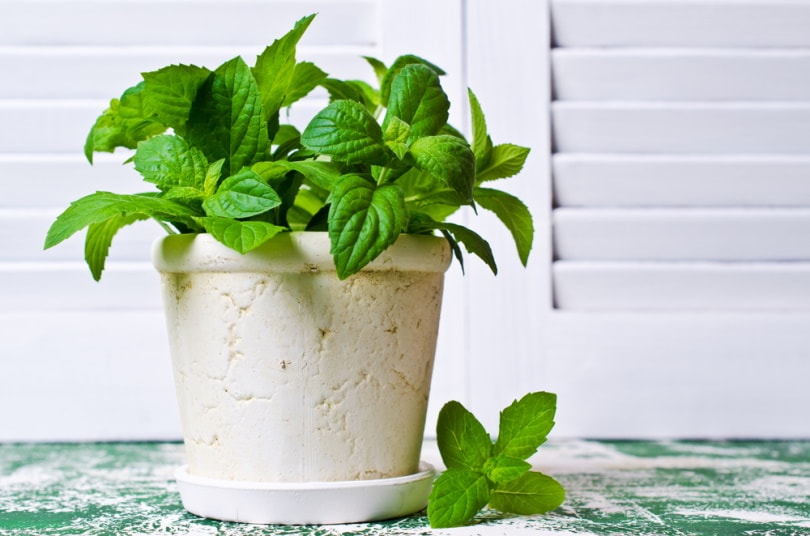
If you’re new to indoor gardening, it’s sometimes best to start slow to avoid wasting time. Novices can use something hardy, a plant that can tolerate an occasional missed watering or a few hours in the shade and continue to flourish regardless. It’s even better when that carefree crop offers a refreshing aroma to fill the air and a pleasant zest to flavor an array of dinner dishes.
If that low-maintenance, high reward gardening style sounds appealing, mint is the perfect plant to grow indoors. There are thousands of mint varieties, and many are easy to grow in containers or outside in a garden. Growing indoors may even be preferable because when given space to spread, mint’s undemanding nature makes it spread aggressively via runners.
Mint is an excellent addition to a garden and one that can stay productive all year. Start making this sensory delight part of your home’s atmosphere with these tips and tricks for growing mint indoors.
Sourcing an Indoor Mint Plant
You can grow mint indoors from seed, or you can use a starter plant to shave a few weeks off the growth time. If you start with seeds, sow seeds about ¼ inch deep in the soil and place them in a sunny spot. Seeds germinate in about 7–14 days, after which point you may need to thin them to give each plant at least 8 inches of space.
Growing mint via propagation is much faster and easier than growing it from seed. If you know someone growing mint, stealing a root division, no matter how small, will yield a full, healthy plant in no time. But even if all you can get is a stem cutting, that’s plenty to get started.
Take a stem cutting from a healthy, green section of a mint plant. Remove a 3–6 inch cutting below a node and remove the leaves from the bottom few inches.
Put the cut end of the plant in a jar of water so that the bottom 1–2 inches are underwater, and place it in a spot that receives about 4 hours of direct sun daily. Within 1–2 weeks, you’ll see small, whitish roots forming. Once they’re an inch long, you can pot the plant in a container with soil.
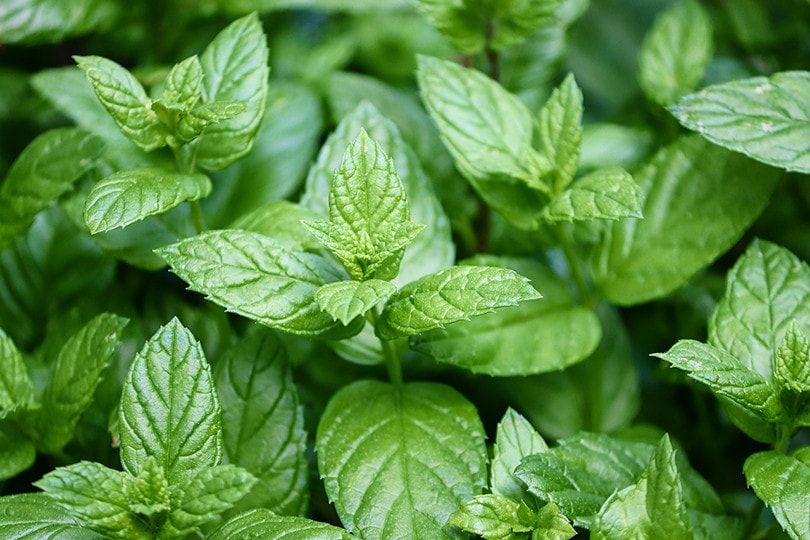
Choosing a Container
Mint doesn’t mind having moist roots, but it doesn’t want to swim in water, so you need a container with drain holes. Plastic containers work well, as do some ceramic pots. Porous materials like clay are usable in a pinch, but they tend to dry the soil out faster, thus making you water the plants more frequently.
The container should be at least 8 inches wide and 12 inches tall to accommodate a full-grown plant. If using a square container, make sure it is at least 6 inches wide.
How to Grow Mint Indoors
Mint isn’t picky in terms of fertilizer, sunlight, and water. You can even continue growing a mint plant in a jar of water, replacing the water once a week to give you weeks or even months of fresh herbs. It takes minimal effort to earn a decent harvest. But to get the best results, there are helpful considerations for every aspect of the growing process.
1. Preparing Growing Media
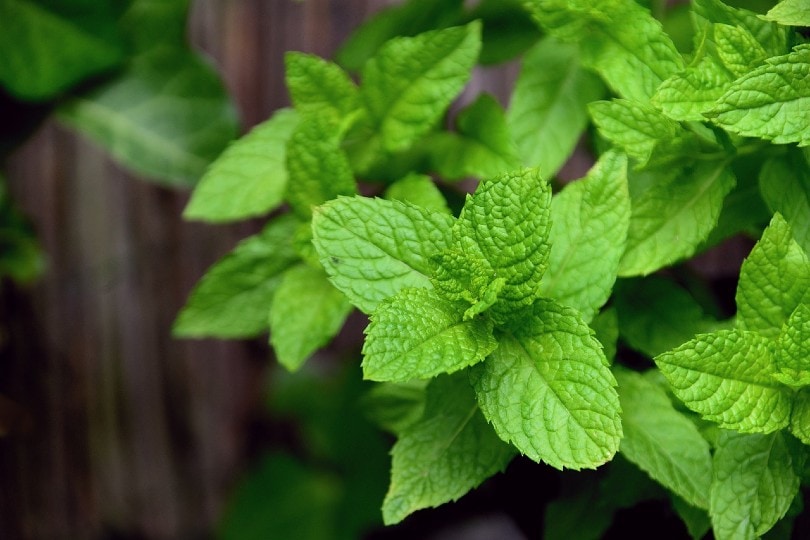
Mint likes rich, well-drained soil with a slightly acidic or neutral pH. To give your mint ideal growing conditions, use amended soil or a high-quality potting mix that holds water but offers good drainage. The best blends will use peat moss or coconut coir with perlite, sand, vermiculite, and pine bark. These will keep the roots moist after watering without flooding them, which could cause disease and rot.
2. Give It Sunlight
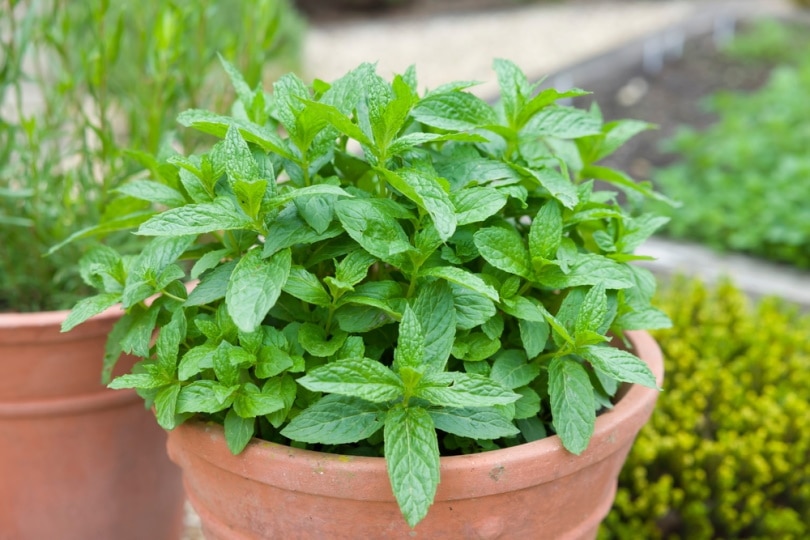
Although it can tolerate shade, mint enjoys the sun. Try to give it direct sunlight for at least 6 hours a day. A south-facing window is ideal for giving it the exposure it needs.
You may need to supplement sunlight with fluorescent lights if you can’t provide 6 hours of exposure. Without enough light, you’ll notice the plant bleaching and yellowing and becoming leggy as it seeks a light source. Give mint 12 hours of artificial light if you’re using it in place of natural sunlight. No matter where you grow it, you must rotate the plant every 3–4 days because keeping it too long in one position may make it lopsided as it leans toward the light.
Along with sunlight, you need to pay attention to the temperature. Mint likes temperatures around 65–70°F during the day and 60–65°F at night. Most climate-controlled homes stay in this range, but location can also impact the plant. Keep your plants away from HVAC vents, radiators, and other heat or cold air sources to prevent stress.
3. Keep the Soil Moist

Water a propagated stem cutting right after planting. Then, you only need to water it when the soil feels dry to the touch. It should only need 1–2 inches of water each week. Water the mint at the base of the plant in the morning, giving the plant time to dry by nighttime.
Mint may be indifferent about watering, but it likes humidity. Give the leaves a light misting with a spray bottle between waterings. You can also fill a small tray with pebbles, add water, and set the container on top to supply slow and steady humidity.
4.Fertilizing Mint

Fertilizer is often unnecessary for mint, but an occasional addition can be helpful. Use liquid fertilizer at most once every 3 weeks during the summer, mixing it to half strength. Reduce the feeding schedule to once every 6 weeks in winter if you’re harvesting it all year.
Feeding mint while you’re growing and harvesting it can be beneficial but avoid overfertilizing it. Plants can lose flavor, develop fungus and rust, and die back when given too much fertilizer.
5. Prune Regularly
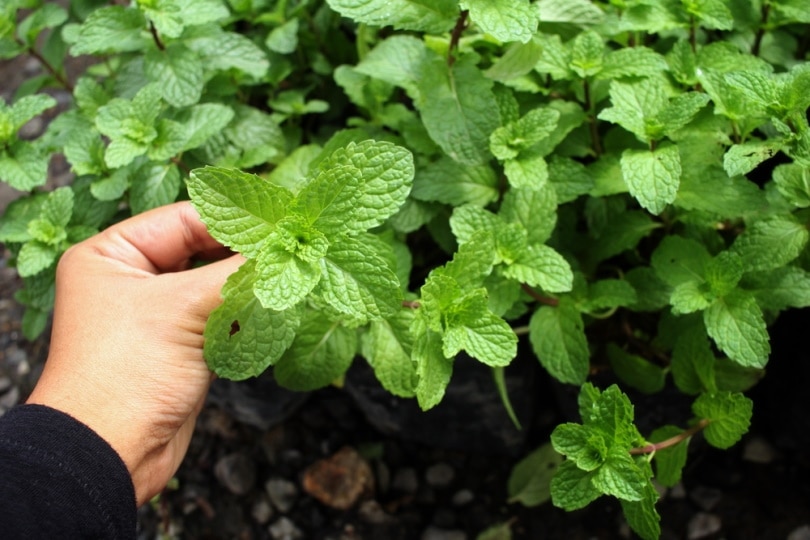
Pruning is essential to promote the best growth, as it gives the mint plant more energy to focus on its roots and leaves. Snapping off flowers is crucial in managing the mint’s nutrient use, so be sure to remove them when they pop up. Otherwise, prune your plant’s leaves once every 2–3 weeks.
To prune your mint plant, use a pair of scissors and clip off pieces of the stem above a pair of leaves. Keep each trimming at least 3 inches long to avoid cutting off young growths, and use them in your next dish. New growths will emerge from the node and create a bushier plant.
6. Harvest Your Plant
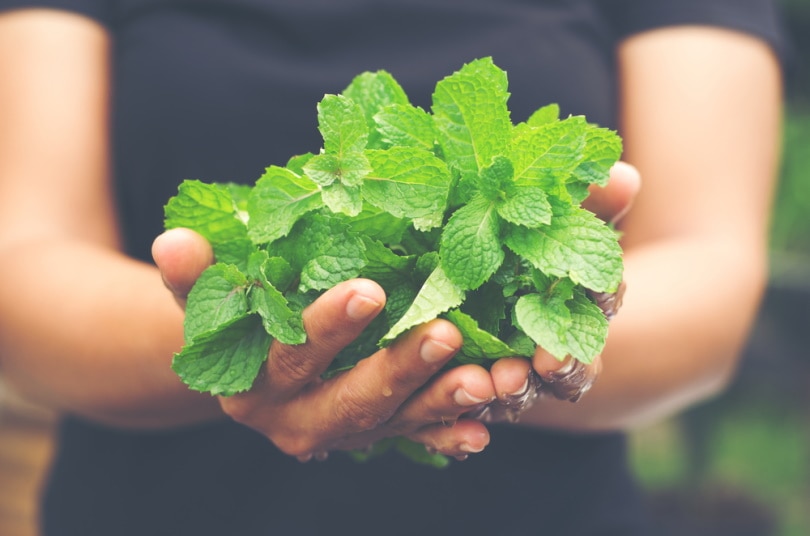
Mint matures from seed in roughly 70 days, but you can harvest leaves as soon as they are abundant. You can often get 2–3 decent harvests every season. Either pick leaves with your hands or clip them off at the stem. If you plan to continue growing the mint, only harvest a third of the plant at most so it can recover.
Best Types of Mint to Grow
There are multitudes of mint options out there, with each one adding unique flavorful twists and aesthetic additions to your indoor garden. Peppermint and spearmint are classic varieties used in a variety of dishes and therapeutic solutions. Other popular culinary varieties include sweeter apple and orange mints, and the variegated leaves of pineapple mint provide attractive ornamentation to a room.
Final Thoughts
Mint is a satisfying addition to the home that will brighten up the atmosphere when it’s not supplying your dinners and desserts with flavor. With such few maintenance demands and an urge to grow, it’s perfect for filling out a space among your other plants, even when you’re feeling overwhelmed by the rest of your indoor garden. Get started with these simple growing tips, and before you know it, you’ll have gorgeous growth adding sweet scents and lush colors to your space.
Featured Image Credit: Veronika Idiyat, Shutterstock
Contents


